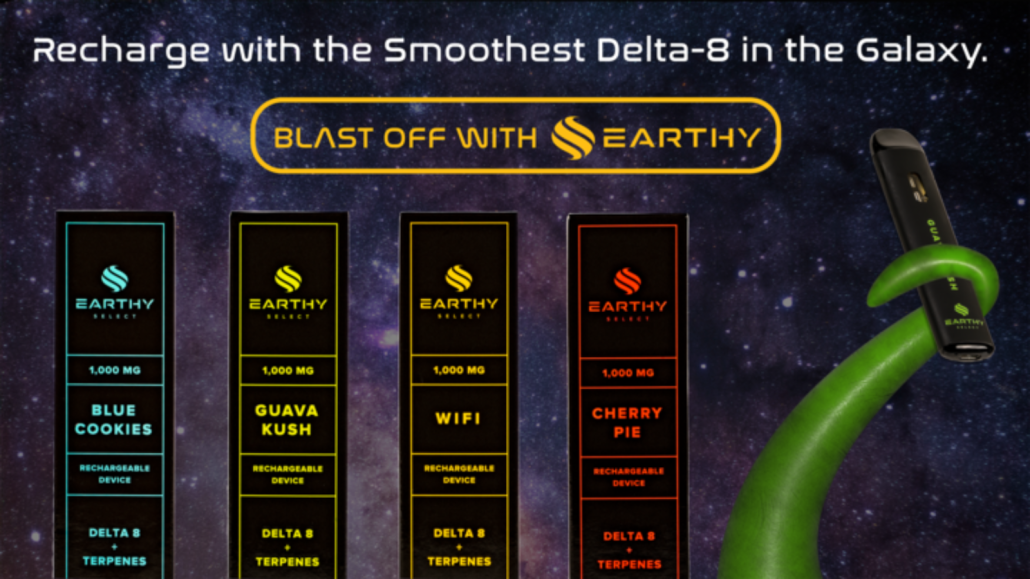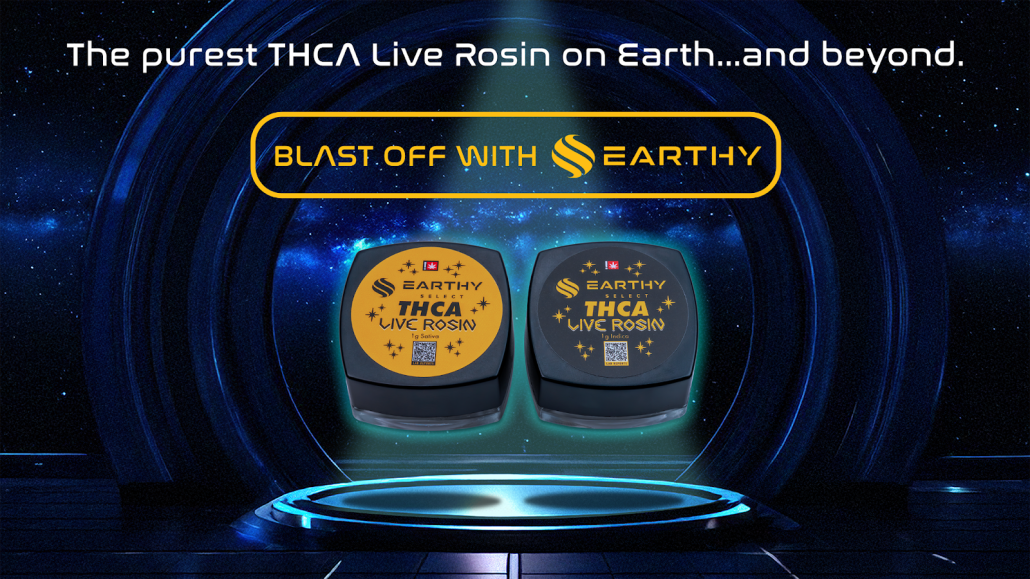Puff, Puff Pause: How Long THCa Can Show Up on a Test
Let’s explore the science of cannabis chemistry, particularly the question many users have: How long might THCa remain detectable in your system? Whether you’re an occasional user appreciating the subtle effects of premium flower or someone integrating cannabis into a wellness routine, understanding THCa detection is important. It’s not solely about passing a test; it’s about making informed decisions in a landscape where cannabis is becoming more accepted, yet still faces legal and professional complexities.
Here at Earthy Select, located in the rolling hills of Asheville, NC, our focus extends beyond crafting federally compliant cannabis products. We aim to equip our community with reliable information. From our sustainably grown THCa Flower to our carefully processed THCa Live Rosin, every product undergoes third-party testing in DEA-registered, ISO-accredited labs. This commitment to transparency, safety, and quality—from seed to shelf—enables us to support both retail customers seeking personalized experiences and wholesale partners seeking dependable, high-quality products.
Let’s take a closer look at THCa, the non-psychoactive precursor to THC, which has become popular for its potential benefits and distinct characteristics. How long might it linger in the body, and what factors could influence its detection? Join us as we review the science, address common misconceptions, and provide insights to help you approach cannabis use with greater confidence. At Earthy Select, our goal isn’t just to offer premium, lab-tested cannabis; it’s to ensure you have a clearer understanding of how to use it responsibly.
How THCa Metabolizes in the Body
When considering cannabinoids, THCa stands out as the precursor to THC, and its path through the body is worth noting. Unlike THC, THCa itself is not psychoactive until it undergoes decarboxylation through heat. Once converted to THC, the body absorbs it into the bloodstream where it becomes metabolized.
Following consumption, THC and related compounds are processed primarily in the liver, where THC is often transformed into a metabolite known as THC-COOH. Drug tests generally target this non-psychoactive metabolite, as it is fat-soluble and may remain detectable for an extended period after use. Detection windows can vary, potentially spanning a few days for infrequent users to several weeks for regular users, influenced by individual metabolism and the storage and release of cannabinoids from fat cells [2][3][7].
Although standard drug tests typically do not screen for THCa directly, its presence may still influence results, as it could convert to THC within the body or during testing. Given that each person’s physiology differs, the metabolism of THCa appears to be a highly individual process, making precise timelines challenging to establish [2][5]. Thus, gaining insight into your own metabolic patterns may offer a sense of how long THCa and its metabolites could potentially remain in your system.
What Happens After You Consume THCa
THCa itself does not produce psychoactive effects unless heated and converted to THC. For instance, when consumed through methods like smoking or vaping, which involve heat, THCa undergoes decarboxylation and is subsequently processed by the liver into metabolites such as 11-hydroxy-THC and THC-COOH. These metabolites can be stored in fat cells and may later be detected by drug tests [2][3].
If consumed raw (without heat), THCa is less likely to appear on standard drug tests. However, more advanced testing methods might still identify THCa or its byproducts. Metabolism, frequency of use, and individual body composition all may influence the duration that THCa or its metabolites might persist in the body.
The Role of Your Liver and Enzymes
The liver plays a significant role in processing cannabinoids. Primarily, enzymes, from the cytochrome P450 family, metabolize THC into 11-hydroxy-THC, which is subsequently converted into THC-COOH. The pace of this conversion may be influenced by factors such as genetics, liver health, and lifestyle. THC-COOH, often the primary focus of cannabis drug tests, is fat-soluble and may be detectable for an extended period, particularly in frequent users [2][3][5].
Detection Windows for Urine, Blood, Saliva, and Hair Tests
Detection times for THCa, or more precisely, its metabolites, can vary depending on the type of test used. Below is a general overview based on user frequency and available research:
- Urine Tests: The most commonly used form of drug screening. For occasional users (one-time), detection may occur within 3-5 days; for moderate users (2-4 times per week), it could take 7-10 days; for daily users, 10-15 days; and for heavy users, up to 30 days or more. Some reports suggest detection as long as 45 days in heavy users [2][3][7][8].
- Blood Tests: Typically used to identify recent use. For occasional users, detection may be possible for 12-24 hours; for frequent users, it could extend up to a week, although most metabolites typically clear within a day or two [1][2][7][8].
- Saliva Tests: Generally detect recent use, with a typical window of 24-48 hours, occasionally extending up to 72 hours in frequent users [3][7][8].
- Hair Tests: Offer the longest detection window, potentially up to 90 days, often reflecting long-term or heavy use [1][2][3][7][8].
These timeframes are estimates, as detection may be influenced by factors such as metabolism, body composition, hydration levels, dosage, and the sensitivity of the test.
Urine Tests: Most Common Screenings
Urine tests are frequently used for cannabis detection, targeting THC-COOH rather than THCa directly. Detection times often depend on the frequency of use, with one-time users potentially testing positive for 3-5 days, while chronic users might show results for 30 days or longer [2][3][7][8]. It’s essential to note that laboratories often detect attempts to dilute urine or manipulate test results, which may be flagged as suspicious.
Standard initial screenings typically use a cutoff of 50 ng/mL, with confirmation tests sometimes as low as 15 ng/mL. Detection can be affected by the test’s sensitivity and individual physiological factors [6].
Blood Tests: Short Window, High Accuracy
Blood tests generally have a limited detection window, often 12-24 hours for occasional users and up to a week for chronic users. They are often considered accurate for identifying recent use, such as in accident investigations, but are less effective for detecting past use beyond this timeframe [1][2][8].
Saliva Tests: Quick and Convenient, but Limited
Saliva tests may detect THC and THCa shortly after use, typically within 24-48 hours. Often used for immediate detection, such as in roadside screenings, these tests might be influenced by factors like mouthwash or oral hygiene practices, which could occasionally result in false positives [3][7][8].
Hair Tests: The Long-Term Lookback
Hair tests can potentially detect cannabinoids for up to 90 days, providing a historical perspective on substance use. They are often more reliable for identifying consistent use but less likely to detect single-use or incidental exposure. While false positives are rare, they are not entirely impossible [1][3][7][8].
How THCa Consumption Methods Impact Test Results
The method of consuming THCa may influence detection outcomes. For example, smoking or vaping, which involve heat, can rapidly convert THCa to THC, potentially leading to quicker and possibly prolonged detection due to increased metabolite production. Edibles, processed through the liver, may also produce detectable metabolites and could extend detection windows, particularly for frequent users. In contrast, topical or tincture applications typically involve minimal systemic absorption and are less likely to be detected unless combined with other methods [8].
Ultimately, factors such as metabolism, body fat, and hydration levels may also play a role in detection duration, regardless of the consumption method.
Body Fat and Metabolism in THCa Retention
THCa and its metabolites are fat-soluble, meaning they may be stored in fat cells and released gradually, potentially extending their detection window. Higher body fat percentages could be associated with longer retention, while a faster metabolism might facilitate quicker clearance of metabolites. Factors such as age, activity level, hydration, and diet may influence this process, though there appear to be no guaranteed methods for immediate clearance [3][8].
Is It Possible to Speed Up THCa Elimination in Your Body?
There is no widely accepted method to instantly remove THCa or THC-COOH from your system. Practices such as hydration, exercise, and balanced nutrition may support the body’s natural detoxification processes, but they do not guarantee passing a drug test, nor do commercial detox kits appear to be reliably effective [2][7][8]. Abstaining from use for a sufficient period remains the most dependable approach.
Natural Elimination vs. Commercial Cleanses
The body typically clears cannabinoids through urine, sweat, and, to a lesser extent, feces, at its own pace. Many commercial “cleanses” seem to primarily dilute samples or temporarily mask metabolites. Their reliability is often questioned, and they may occasionally result in test results being flagged as suspicious if dilution is detected [7][8].
Practical Tips That May Help
If a drug test is approaching, experts advise abstaining as early as possible. Supporting natural detoxification through hydration, a fiber-rich diet, and moderate exercise may be beneficial; however, strenuous activity immediately before testing is generally not recommended. Also, understanding the type of test and its detection window may offer the best chance of a favorable outcome.
Final Thoughts
For anyone facing a drug test, understanding the potential duration that THCa or its metabolites might remain in your system is essential. Detection times can vary based on usage patterns, individual physiology, and the type of test. Abstaining from use for a sufficient period appears to be the only reliable way to ensure clearance, as methods to hasten the process are often unreliable and could raise suspicion. For those using cannabis-derived products, it may be prudent to plan accordingly and allow ample time for natural clearance if a drug screening is anticipated.
Frequently Asked Questions About How Long THCa Can Show Up on Tests
What factors contribute to how long THCa stays detectable?
Factors such as frequency of use, dosage, body composition (particularly fat percentage), metabolism rate, and lifestyle may all play a role. Detection windows may range from a few days for occasional users to over a month for frequent or heavy users [2][3][7][8].
How accurate are drug tests when detecting THCa?
Most drug tests do not directly screen for THCa but rather for its metabolite, THC-COOH. While generally reliable, tests may occasionally produce false positives or negatives, influenced by factors such as cross-reactivity and sensitivity levels [1][2].
Can secondhand smoke cause THCa detection on drug tests?
Secondhand exposure is unlikely to result in a positive test. Only extreme conditions, such as prolonged exposure in a confined, unventilated space with heavy smoke, may lead to minimal contamination, typically below standard detection thresholds [3].
Can regular cannabis use influence THCa detection times?
It appears so. Frequent or heavy use may significantly extend detection times, as cannabinoids can accumulate in fat tissues and take longer to clear—potentially up to 30 days or more in some instances [2][3][7][8].
Can THCa cause a false positive for THC?
Standard drug tests typically do not differentiate between THCa and THC metabolites. If THCa converts to THC, it might be detected as such. However, false positives from pure THCa alone are generally uncommon [2][5].
Do detox products work for clearing THCa from the body?
There is limited scientific evidence to support the effectiveness of commercial detox products for rapidly clearing THCa or THC metabolites. Such products often dilute samples and may be flagged as suspicious during testing [2][7][8].
Can exercise or diet changes influence how long THCa is traceable in a test?
Exercise and dietary adjustments might have a minor impact on the rate of metabolite elimination, but there is no robust evidence to suggest they significantly reduce detection windows [8].
Medical Disclaimer / Legal Disclaimer – Information is provided for educational purposes only. It does not, and is not intended to, constitute legal advice or medical advice. We strive to be accurate and up-to-date, but the legality of cannabinoids and the science of cannabis are continually evolving. The author is neither a legal professional nor a medical expert. Before buying or using any products, you should consult with your local authorities and medical providers.
References:
- https://www.theedgetreatment.com/how-long-does-thca-stay-in-your-system-a-closer-look-at-this-cannabinoid/
- https://viiahemp.com/blogs/education/how-long-does-thca-stay-in-your-system
- https://www.medicalnewstoday.com/articles/324315
- https://thehempdoctor.com/blog/how-long-does-thca-stay-in-your-system/
- https://thehempcollect.com/blogs/blog/how-long-does-thca-stay-in-your-system
- https://ntcrc.org/wp-content/uploads/2020/06/DCRVolume5.1-2_The_Marijuana_Detection_Window.pdf
- https://budpop.com/how-long-does-thca-stay-in-your-system/
- https://www.webmd.com/mental-health/addiction/what-to-know-about-how-long-marijuana-stays-in-your-system
- https://cleanremedies.com/blogs/cbd-basics/how-long-does-thca-stay-in-your-system






